AWS Certified AI Practitioner
Guidelines for Responsible AI
Legal Risks in Generative AI
Welcome to this comprehensive guide on the legal risks associated with generative AI. In this article, we explore the key challenges introduced by the rapid adoption of generative AI models and discuss effective mitigation strategies to address these risks. Generative AI is revolutionizing industries by enabling innovative capabilities like text classification, summarization, image creation, and even enhanced code generation. However, alongside these advancements come challenges such as hallucinations, copyright and intellectual property issues, bias in decision-making, generation of offensive content, and data privacy concerns.
Hallucinations
One well-documented challenge in generative AI is hallucination. This phenomenon occurs when the model generates entirely fabricated content that appears accurate and credible. For example, if an AI lacks sufficient data on the Great Wall of China, it might invent details—for instance, stating that the Wall is lined with watchtowers every 500 feet—even though such information is not factual.
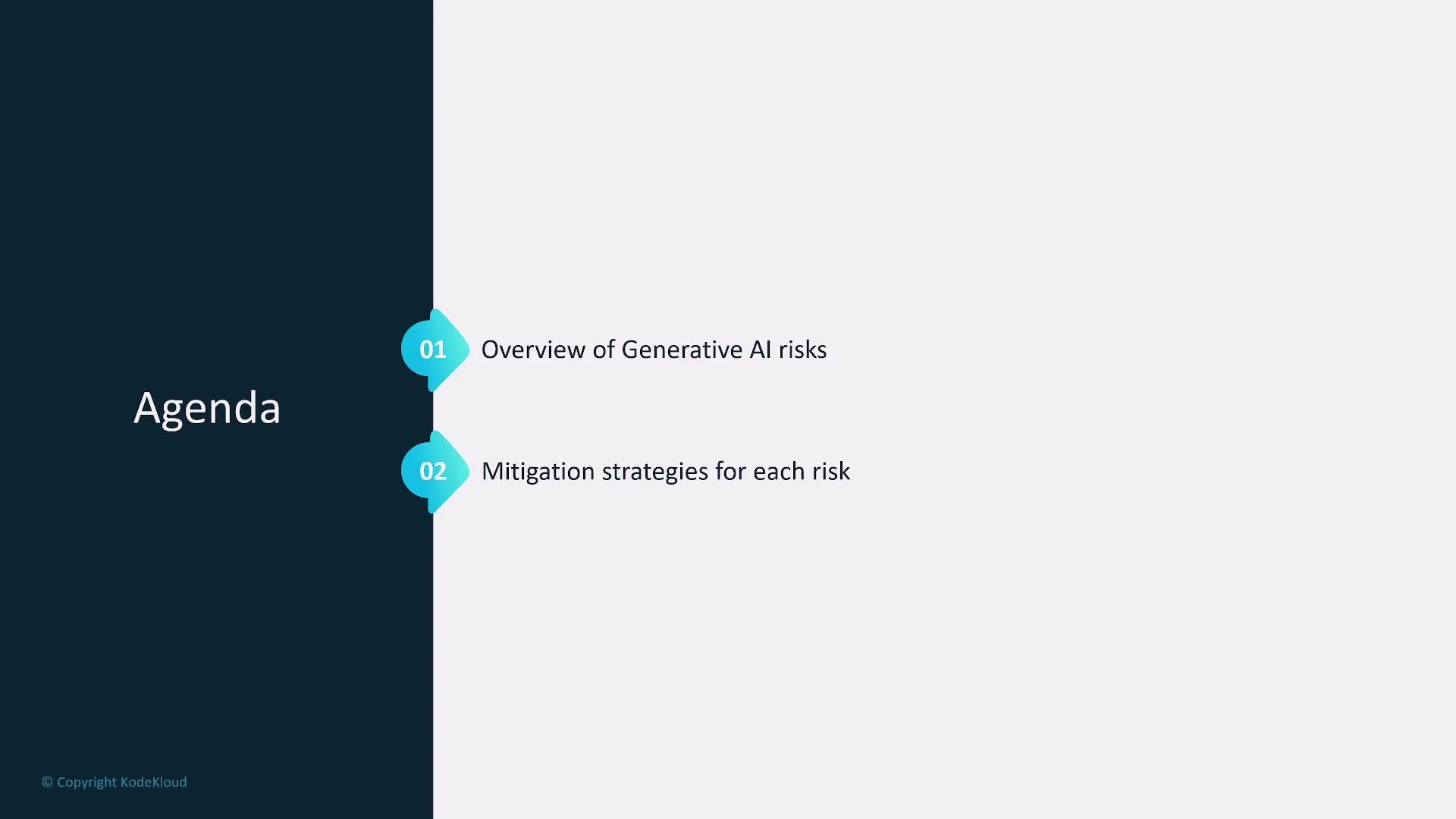
Hallucinations can result in significant legal challenges if inaccurate AI-generated content misleads users or leads to defamation. This underscores the need for rigorous content validation and the implementation of robust guardrails to ensure outputs remain factually grounded.
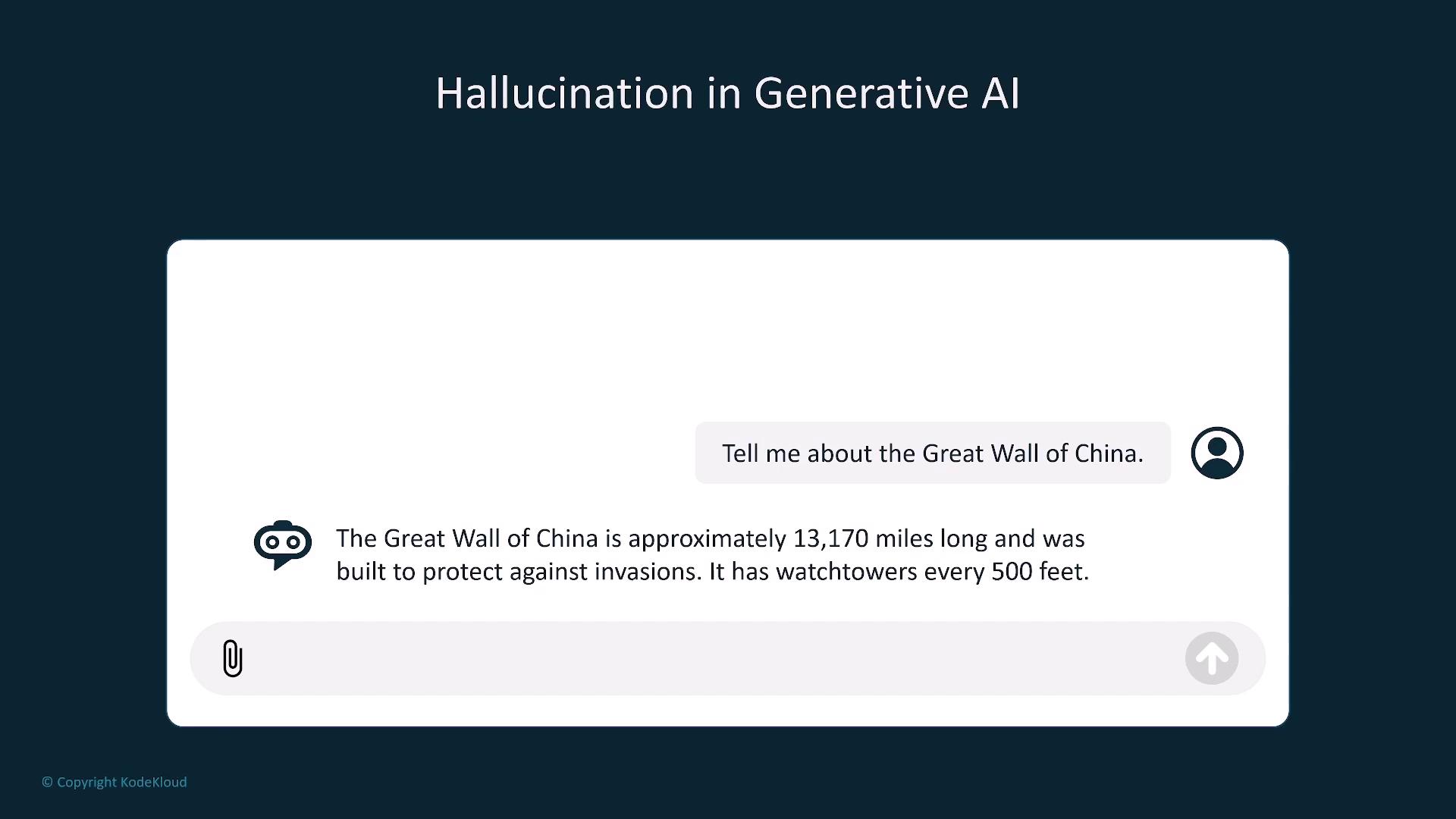
Copyright and Intellectual Property Concerns
Using copyrighted content without proper authorization poses a serious legal risk. When models are trained on copyrighted material without permission, it can lead to violations of intellectual property laws and potential litigation. For instance, Getty Images filed a lawsuit against Stable Diffusion for using millions of copyrighted images without proper consent. This scenario highlights the critical importance of monitoring training data sources and implementing robust sourcing protocols.
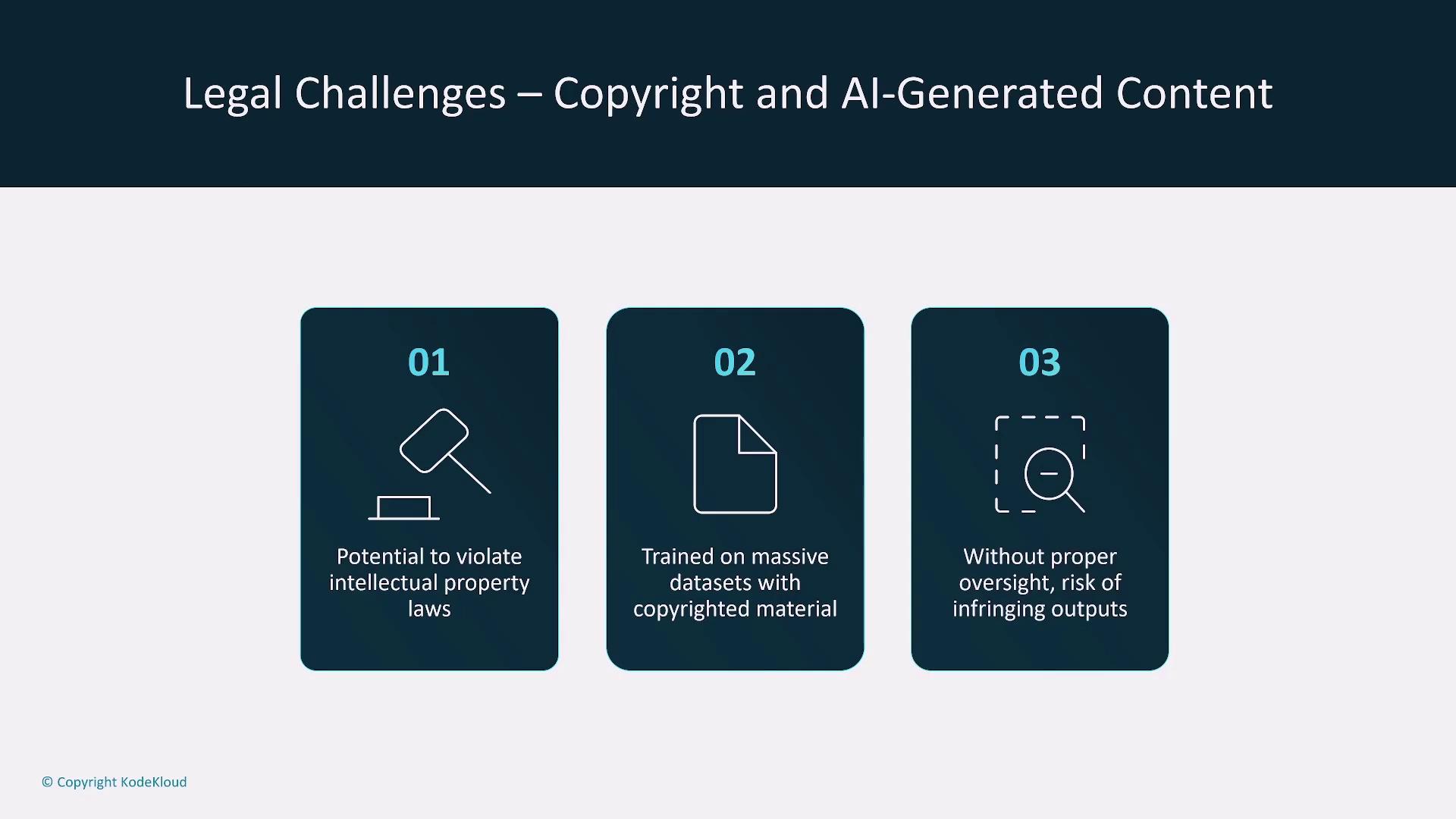
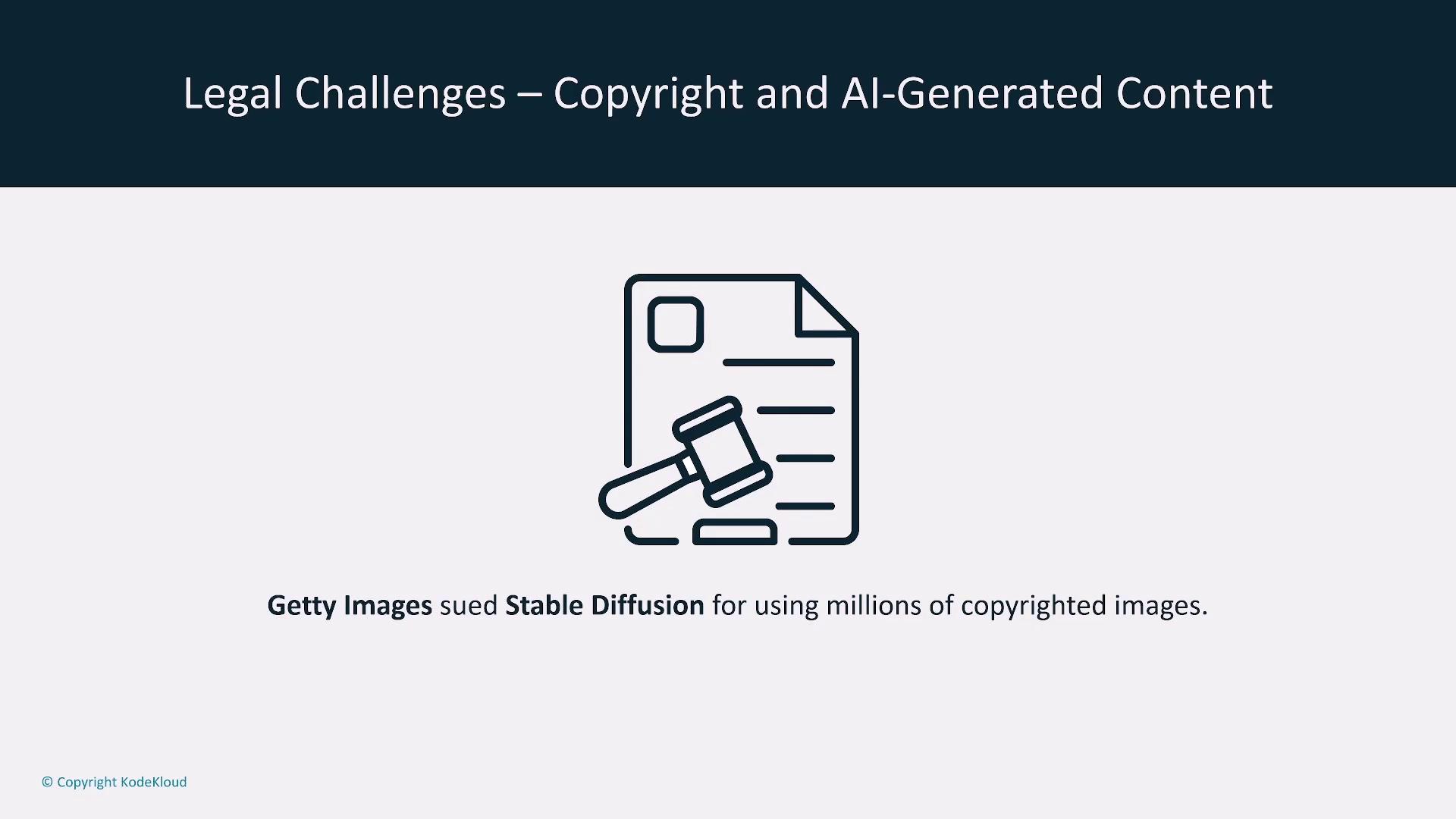
Tip
Regularly review and update data sourcing standards and permissions to safeguard against unintentional copyright infringements.
Bias in AI Systems
Bias in AI systems raises both legal and ethical concerns, especially when these models are integrated into decision-making processes such as hiring. If the training data is biased, the AI might produce discriminatory outcomes. For example, an AI hiring tool once automatically rejected women over 55 and men over 60, resulting in legal action from the Equal Employment Opportunity Commission. Regular audits and the use of explainability tools, such as SageMaker Clarify, are essential to detect and mitigate bias in AI systems.
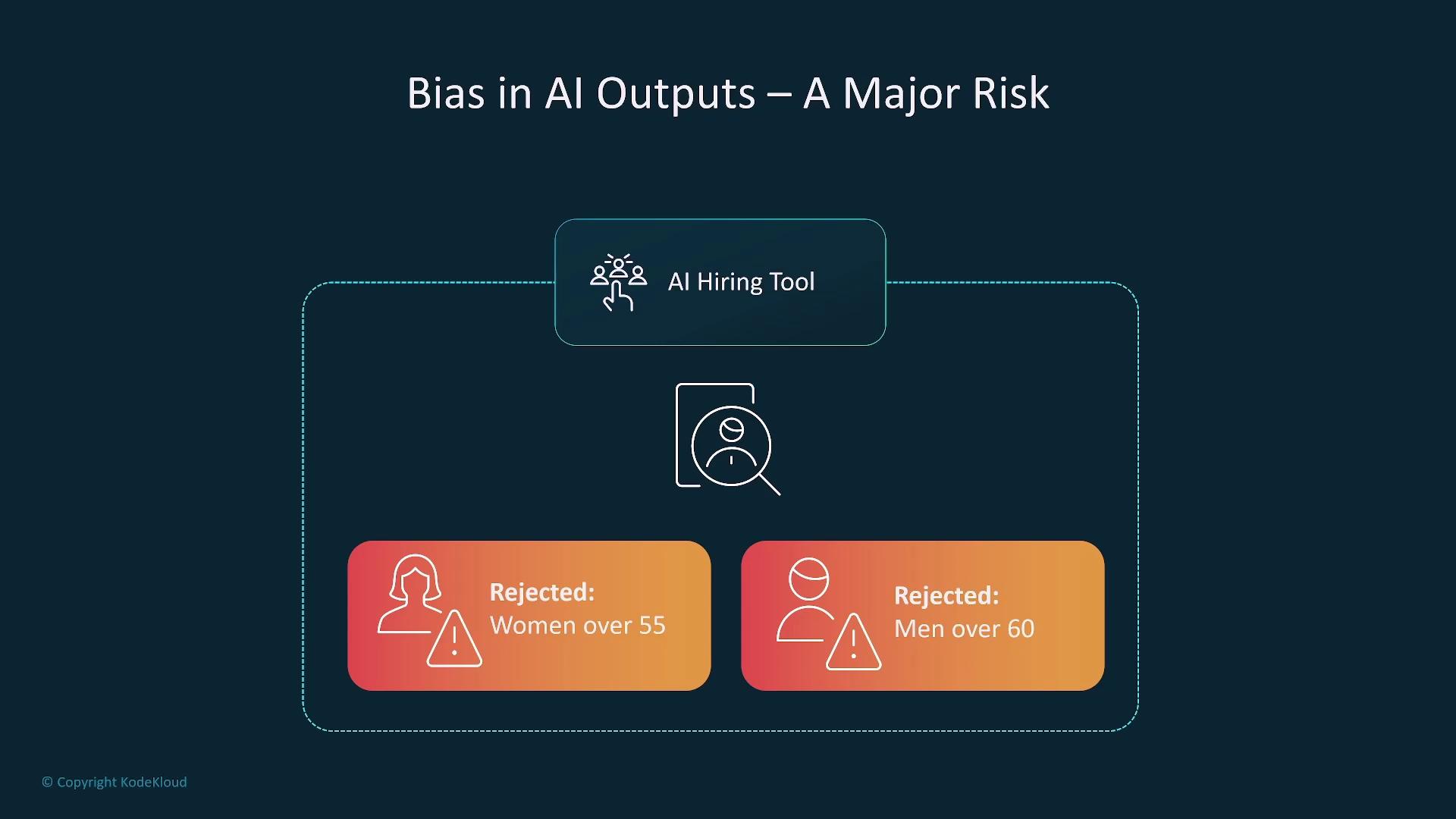
Auditing AI models not only helps detect these biases early but also promotes transparency and fairness in decision-making processes.
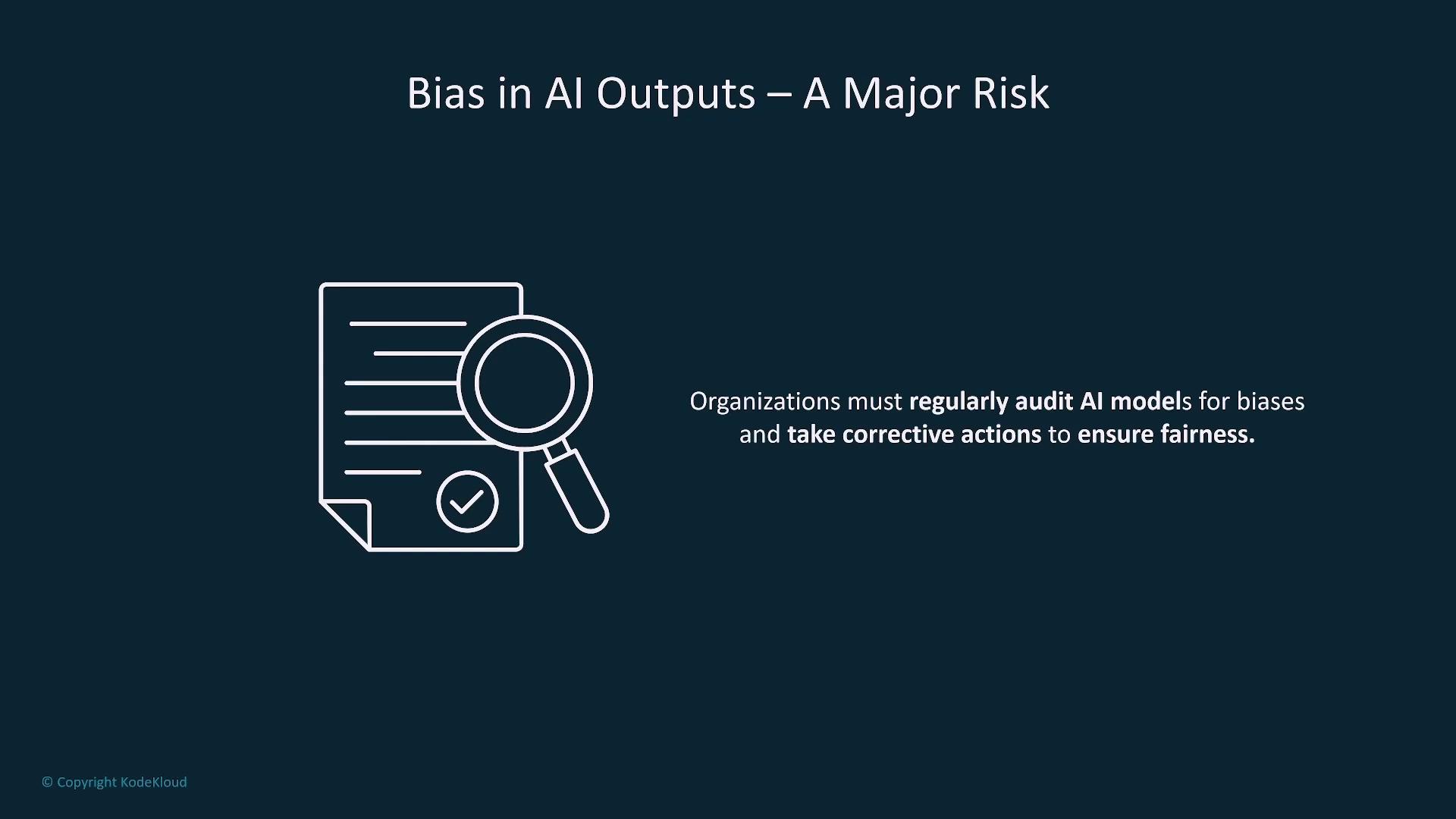
Offensive and Inappropriate Content
Generative AI may inadvertently produce offensive or inappropriate outputs, such as hate speech or graphic violence, particularly when trained on unsanitized data. Filtering mechanisms are critical to prevent the dissemination of such content and protect users from potential harm. Organizations should implement robust content guardrails to filter harmful language and manage user-generated input effectively. This approach is especially important when leveraging platforms like Amazon Bedrock.
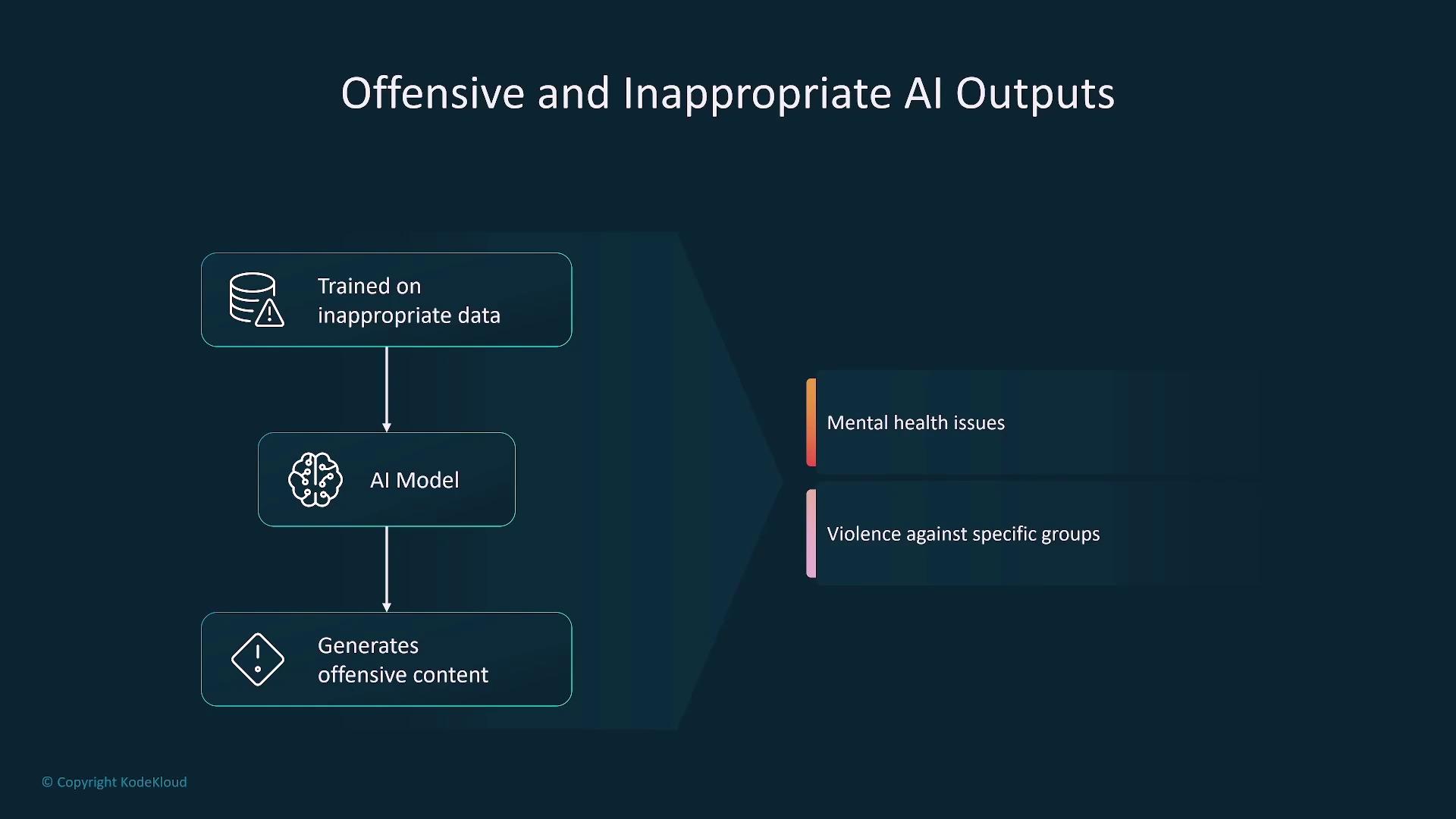
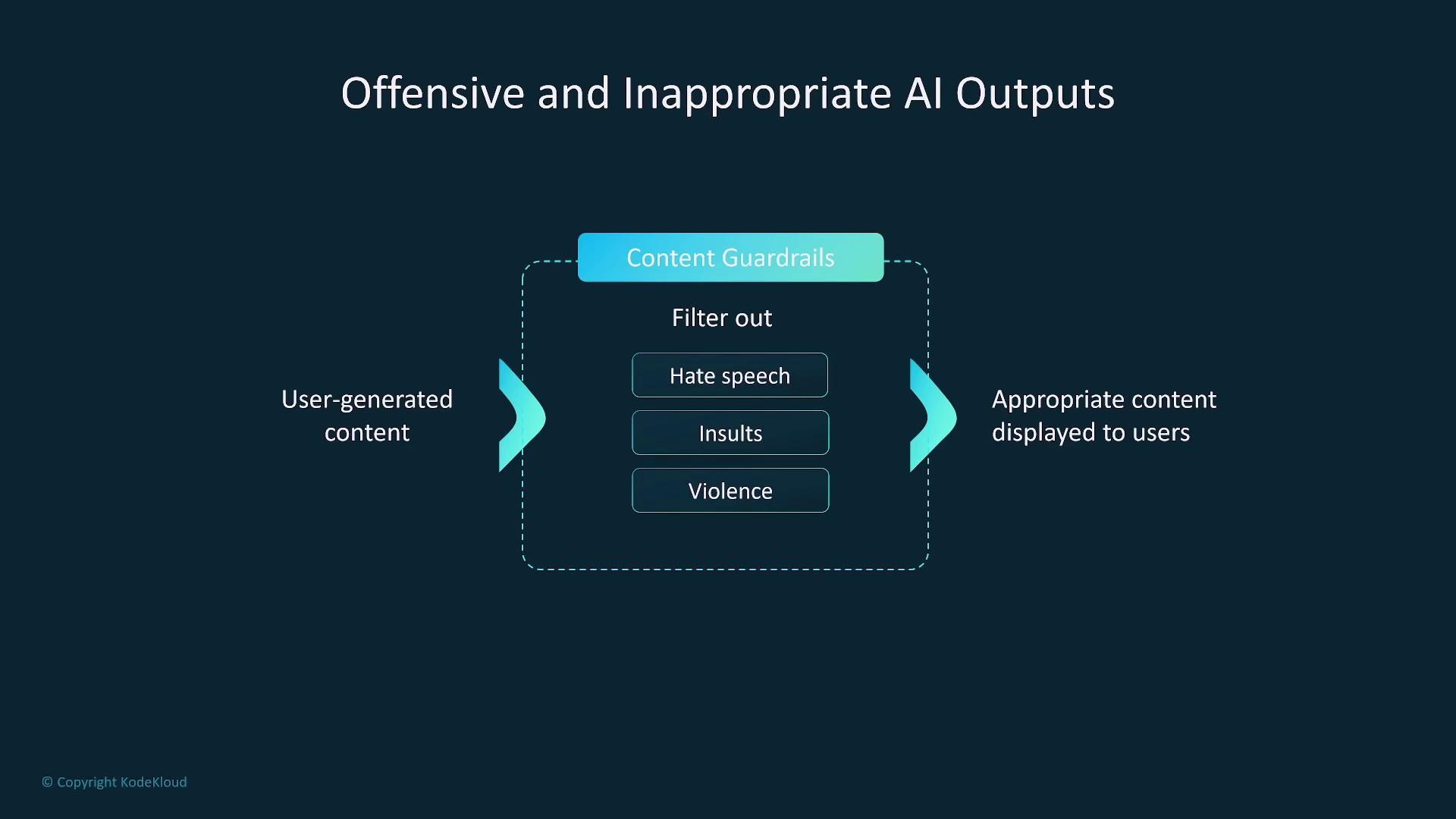
Important
Ensure that content filtering and sanitization pipelines are continuously updated to cope with evolving language and emergent forms of harmful content.
Data Privacy and Security
Data privacy and security are paramount concerns when sensitive information, such as Personally Identifiable Information (PII), is inadvertently included in training data. Once the model retains sensitive data, it becomes exceedingly difficult to purge, resulting in long-term security risks. A strict data governance policy combined with effective data cleansing practices is essential in mitigating these risks before model training begins.
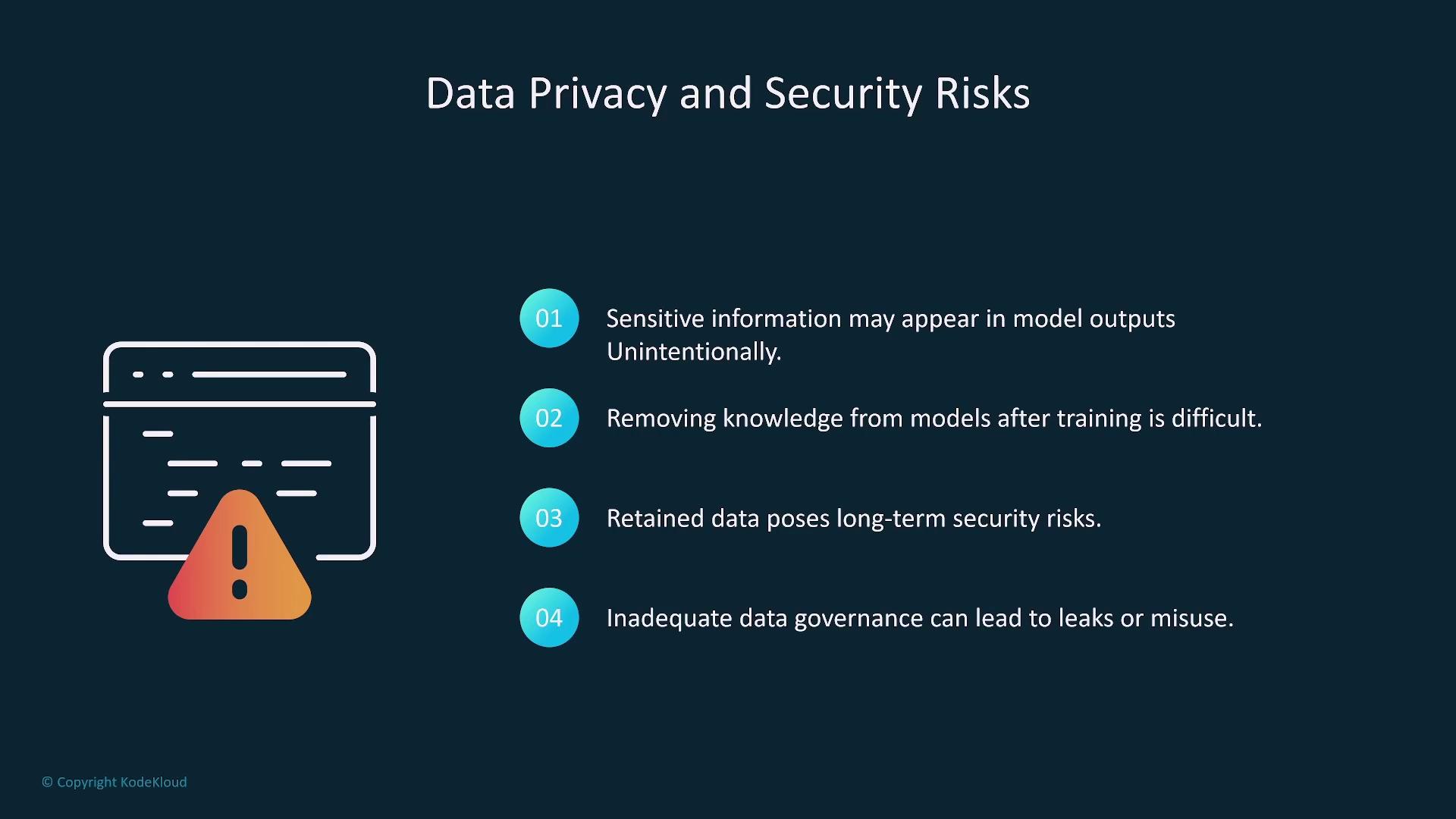
Best Practice
Adopt rigorous data cleansing and governance practices to ensure that no sensitive data is used during the training process.
Conclusion
In summary, generative AI presents a range of legal risks—from hallucinations and copyright infringements to biased outcomes, offensive content, and data privacy breaches. Effectively mitigating these risks requires continuous auditing, the implementation of robust guardrails, and proactive data governance. Organizations must vigilantly monitor training data and enforce appropriate measures to ensure fairness, legality, and security in AI-generated content.
Thank you for reading this guide on the legal risks associated with generative AI. We hope this discussion has provided valuable insights and serves as a foundation for implementing robust risk mitigation strategies in your AI initiatives.
For further reading:
Watch Video
Watch video content